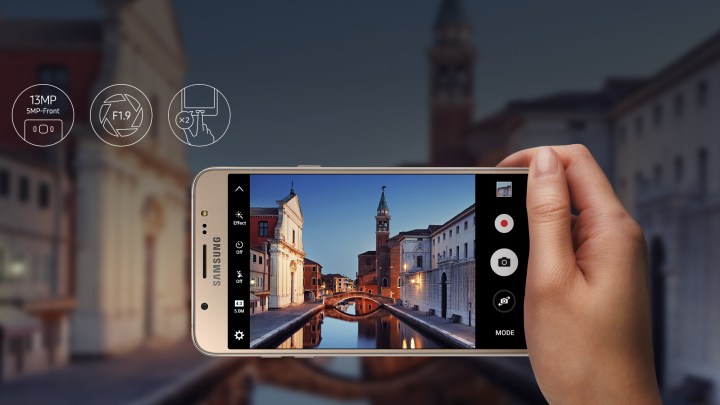
A lot changes in three years, though, and now the J series fills a different niche: midrange phones for the budget-conscious masses. On Wednesday, product web pages on Samsung France and Samsung Spain suggest the latest additions to the Galaxy J family, the J5 and J7, are heading to European markets following a quiet launch in China earlier this year.
The J5 and J7 aren’t exactly extraordinary. Both sport Super AMOLED panels with 720p resolutions — an unfortunate step down from the Chinese models’ 1080p screens, in the case of the J7 — and the J5’s display measures a few fractions of an inch smaller (5.2 inches) than the J7’s (5.5 inches) screen. Otherwise, the two share most internals in common: a metal backplate, a 2GB RAM module (down from 3GB in the Chinese models), a 13-megapixel rear camera with a f/1.9 aperture, a 5-megapixel front-facing shooter with dedicated LED flash, 16GB of storage, a MicroSD slot, and LTE connectivity.
The remaining differences are largely superficial. The J7’s got an ever-so-slightly more powerful processor (Samsung’s Exynos 7870 or Qualcomm’s Snapdragon 617 versus the J5’s Snapdragon 410), and a marginally bigger removable battery (3,300mAh versus 3,100).
The specs may not sound impressive, but the prices are palatable: J7’s going on sale in Spain for 299 euros. Pricing for the J5 hasn’t been announced, but it’s a safe bet it’ll come under its higher-end cousin’s price tag (the Chinese model’s going rate is 1,398 yuan, or about $225). The availability of the J5 and J7, though, remain a bit of a mystery — as of publishing time, the J5’s spec page resides exclusively on Samsung France’s website — but given the handsets’ compatibility with a wide range of carrier bands, a broader launch down the line is a good bet.
Editors' Recommendations
- 5 phones you should buy instead of the Samsung Galaxy S24
- Should you buy the Samsung Galaxy Z Fold 5 or wait for the Z Fold 6?
- Is the Samsung Galaxy S23 still worth it 10 months later?
- These two Android foldables cost less than one Galaxy Z Fold 5
- How a few small changes made me love the Samsung Galaxy Z Fold 5


